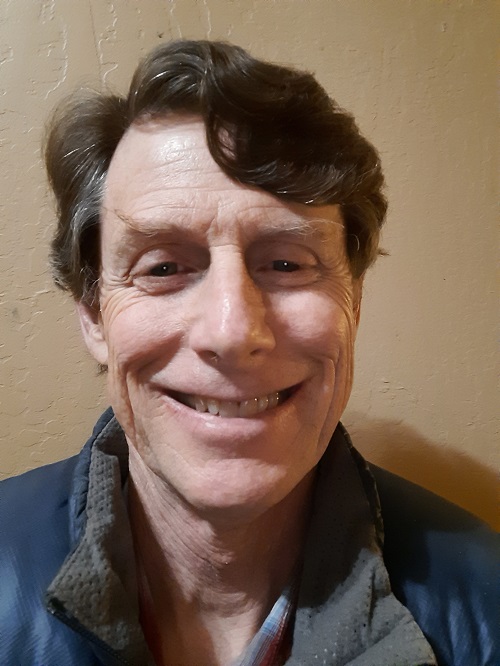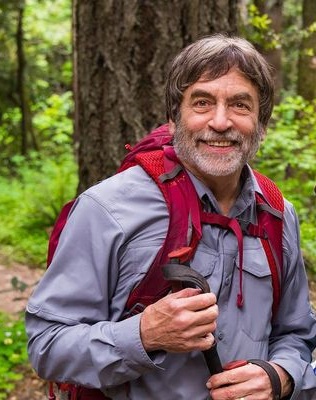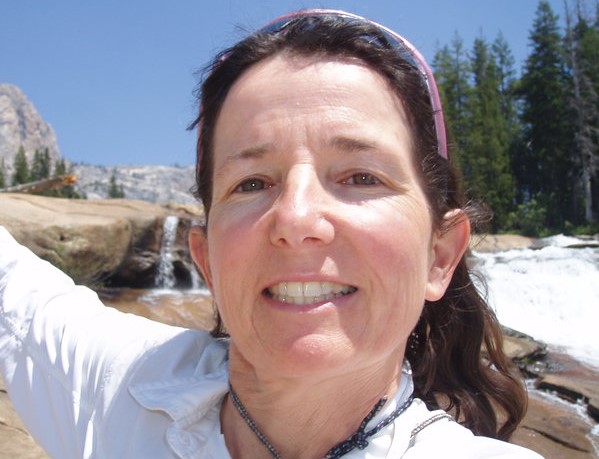Santa Cruz County Sierra Club Group
Executive Committee Candidate Statements
2021: Vote before January 13th!
Only 4 seats are available and ballots are due by January 13th, 2020!
This year five candidates were nominated by a Nominating Committee composed of five volunteers of the Santa Cruz Group. One of those candidates withdrew. The committee utilized criteria to review incumbent candidates including but not limited to: complies with National and Group Bylaws and Codes of Conduct, has shown demonstrated leadership, and acts responsibly, reliably, and timely. The committee also interviewed new candidates to assess their dedication and qualifications to serve and fulfill the responsibilities of Executive Committee members. In addition to those nominated by the Nominating Committee, one additional candidate qualified to run by petition by submitting 75 valid signatures of Sierra Club members who reside in Santa Cruz County by the deadline for petition submission.
Meet your candidates:
Jerry Busch - Nominating Committee Candidate

I support economic, social and environmental justice. We must strive together as a society to end class divisions and to empower all communities. It has been my great privilege to participate in broad-based environmental activism in Santa Cruz County for more than 45 years. I fought to: save the Pogonip property, establish the Santa Cruz Greenbelt, protect sensitive habitats, stop offshore oil drilling. As a founder of the Watsonville Wetlands Watch, I involved underserved communities in environmental education and cultivated a new, diverse generation of environmental activists, restorationists and scientists. My leadership on College Lake insured that the water agency would prepare an Adaptive Management Plan to mitigate wetland impacts, create an AMP Committee to oversee the plan’s development, and seat a committee reflective of the cultural diversity and tribal heritage of the surrounding community. I hope to join with the ExCom in advancing the Sierra Club’s mission of diverse environmental action, bringing to bear my 20 years of experience in urban planning, team management, policy development and CEQA law, together with years of professional writing and editing experience and skills in habitat assessment and management. Of paramount importance is the protection and restoration of sensitive plants and wildlife. In future years, we must push to ensure that the College Lake AMP succeeds in protecting waterfowl, restore sensitive uplands around Watsonville Slough, save declining populations of the endangered Santa Cruz tarplant, and win battles for climate, housing and transportation justice by uniting with a multi-cultural coalition.
Steve Bakaley - Nominating Committee Candidate

My main passion in life is to explore, protect, and defend wild places and to share them with other people. To that end I have been an outings (local day hikes) leader for the Sierra Club for 36 years and a life member for 40 years.
While the Executive Committee is well represented by advocates for conservation and transportation, I am the only incumbent member who represents Santa Cruz Sierra Club local outings. Outings are often the first exposure to the Sierra Club for potential activists.
During my past three years as an incumbent member of the executive committee I have served as webmaster wherein I replaced a non-standard Group website that required a volunteer to maintain with a standard Club website and Calendar of Events. I also served as outings chair, this year’s executive committee vice chair, outreach committee chair, contacts database administrator and mass email administrator. I also served on the Conservation, Transportation, and Political committees.
The pandemic has temporarily put our outings program on hold. I am working with the Club’s Local Outings Support Committee to restore outings as soon as it is practical to do so safely and with minimal risk to participants. I want to expand the Santa Cruz Group’s outings program and greatly widen its demographics while offering fun, safe, educational programs that support local environmental initiatives.
Please consider re-electing me so that I can continue this work on your behalf.
Keresha Durham - Petition Candidate
As a fifth generation Northern Californian and a descendant of those who fought in the American Revolution, I come from a long line of tough, hard-working pioneers. I have a deep-rooted connection to our environment and fierce desire to protect it like a Mama Bear. I bring 35 years of activist expertise focused on overpopulation, the climate, active transportation and livable cities.
Overpopulation drives all environmental problems. Unchecked population growth negatively impacts our quality of life and environment. Population accelerates the climate crisis, strains resources as we build over habitat; over-pumps our aquifers, creates heavier traffic, pollution and destroys biodiversity. More people means less quiet open space, more water shortages, and disappearance of vital habitat.
Research shows if we educate girls and women, celebrate those who choose to be child-free, provide access to birth control, encourage small families of 1 or 2 children, we can balance population with limited natural resources and support the climate.
Since 2010, I have served tirelessly in this Sierra Club as Vice Chair and in the conservation, transportation, water and political committees and social media. I chaired our Events Committee, organizing monthly educational presentations. I began our UCSC intern program. I spearheaded the first fundraiser to honor elder Eco-activists.
This last year I analyzed hundreds of pages of Environmental Impact Reviews and plans and I wrote 30 pages of commentary to protect habitat and promote sustainable development.
I am an effective experienced activist-please support my work to protect our health and our environment.
Adam Scow - Nominating Committee Candidate
As a lifelong environmental advocate, I’m excited to run for the Executive Committee. Santa Cruz County faces major environmental challenges that I’m excited to tackle alongside the other talented members of the Executive Committee. As a resident of the Pajaro Valley, I would bring a much needed south County perspective, especially on the critical issues of water, agriculture and transportation.
I currently serve on the Advisory Board of Regeneration Pajaro Valley Climate Action, a community based organization working for climate justice and developing local youth. For over 13 years I worked for Food & Water Watch, where as State Director I helped lead campaigns to ban fracking, including here in Santa Cruz County in 2014. In 2008, I had the pleasure of assisting Felton FLOW in its campaign to de-privatize their water system after fighting severe abuse by the Cal-Am water company.
I also have deep experience working in our region, having helped win fracking bans in San Benito and Monterey Counties. As a strategist for Public Water Now, a local organization working to win public ownership of the water system on the Monterey Peninsula, I have worked to stop a destructive and unnecessary desalination plant on Monterey Bay.
As the grandson of a farmworker from Oaxaca, Mexico, I also bring a commitment to social justice that I believe must be intertwined with the fight to save our environment and planet. I’m honored to have the support of Rick Longinotti and Ron Pomerantz, and I hope to earn your vote.
Kristen Sandel - Nominating Committee Candidate
As a 27 year resident of the San Lorenzo Valley, I’m fortunate to live in one of the world’s most extraordinary natural environments, and I’ve seen the realities of climate change in these unique, beautiful and fragile ecosystems. I was deeply affected by our devastating 2020 wildfire season and its aftermath, and I’d like to bring the Sierra Club’s powerful environmental voice to restoring and protecting this irreplaceable area, which is vital to Santa Cruz County but often under-represented.
My environmental activism began with Extinction Rebellion Santa Cruz’s direct action responses to the climate crisis, and I am a member of the SLV Environmental Committee, Citizens’ Climate Lobby and the CFST. I’m currently involved in the SLV Environmental Committee’s work to protect vulnerable forest lands after the recent wildfires. I have worked in support of Downtown Commons Advocates and SCCAN, advocating to establish a Green Commons downtown, preserve the library at its current site, and oppose the construction of an unnecessary parking garage downtown. I strongly support the expansion of public transit along the rail corridor, as well as increasing options for biking and walking in every part of the county.
This is a pivotal time for Santa Cruz County, and we have a chance to really push for a greener, more environmentally aware future. I think the Sierra Club can be a big part of that local response to climate change, and I’d like to help the Club’s members do that in any way I can.
---------------------------------------------------------------------------------------------------
Additional Questions
1) How have you worked as an environmental leader within the Club or with other organizations?
Jerry: I’ve led many environmental campaigns. I founded the Watsonville Wetlands Watch to defend coastal wetlands from urban development. I co-created the Wetland Educational Resource Center and established wetland-based curricula and stewardship programs. I also led the successful push to require an Adaptive Management Plan for College Lake with stakeholder oversight.
Kelsey: I’ve organized around climate/the environment as staff with the Romero Institute. In my personal life, I’ve coordinated with organizations working on issues of Indigenous sovereignty and climate action initiatives locally and nationally. Additionally, I made climate change a core policy pillar in my recent campaign for City Council.
Steve: I have been a local outings leader for the Sierra Club since 1984. I was the SF Bay Chapter Outings Chair for nearly twenty years and served on the SF Bay Chapter executive committee prior to moving to Santa Cruz. I am currently the vice chair of this Executive Committee.
Keresha: 23 years ago, I began organizing slide shows at Club members’ homes. I have served as Vice Chair of Ex Com, Chair of Events and on every committee. Also, Chair of City Transportation Commission, Vice Chair of Population Connection, with Environmental Council, Climate Action Task Force and Save Neary Lagoon.
Adam: I’ve worked with the Sierra Club for over 15 years on issues of defeating water privatization, banning fracking, and the overall fight for climate justice. I currently serve on the advisory board for Regeneration Pajaro Valley Climate Action, and I am the former California Director for Food & Water Watch.
Kristen: I joined Extinction Rebellion SC as a direct action response to the climate crisis, have worked with Downtown Commons Advocates, SCCAN, and am a member of Citizens’ Climate Lobby, the Campaign for Sustainable Transportation and the SLV Environmental Committee, currently focusing on recovery from the CZU fires.
2) What do you view as the most pressing environmental issue facing Santa Cruz County?
Jerry: Global warming, automobile use and stream sedimentation are critical issues. The Sierra Club must continue to actively protect and restore endangered species and habitats, and strengthen and defend our strong environmental regulations. We must prevent habitat degradation by the College Lake reservoir and restore upland habitat lost along Watsonville Slough.
Kelsey: Building resilience to climate change and bringing down carbon; we need to aggressively pursue sustainable transportation options to sever reliance on fossil fuels, and noting our unique vulnerability from sea level rise and wildfire, we need to prepare our communities to adapt to climate-related emergencies.
Steve: It’s hard for me to choose between transportation and salt water intrusion into our aquifers. The former is choking us with greenhouse gases for ever increasing time intervals each day and if the latter is not properly addressed water rationing will be an ongoing fact of life.
Keresha: Human overpopulation is the root of all environmental issues. To fight extreme weather, habitat loss, traffic, pollution, save aquifers, endangered species and biodiversity, we must address unsustainable growth and live within our carrying capacity. Our county doesn’t have enough water to support the high-density building being lobbied now by developers.
Adam: I would say the climate crisis is the most pressing issue with water issues as a close and related second. Santa Cruz County must dramatically reduce our greenhouse gas emissions, in concert with the rest of California and the nation.
Kristen: Climate change is our most over-arching problem, exacerbating water shortages, worsening wildfires, causing sea-level rise, difficulties in agricultural production and many other challenges. We need to balance growth and development in environmentally sustainable ways, including focusing on public transit as well as bicycle and pedestrian-friendly options.
3) What aspects of the Club’s work are you most interested in being involved with?
Jerry: As a result of my eight years of advocacy (with help from Ex Com), PV Water will prepare an Adaptive Management Plan for College Lake wetlands that includes “management measures to preserve waterfowl habitat quality.” Continued Sierra Club involvement is critical to ensure that the AMP is strong and successful.
Kelsey: I’m interested in policy work around transportation, water, and local climate action, as well as getting involved in conservation efforts. Given my work in media and communications, I’m especially inclined toward outreach efforts. I’d like to increase engagement and bring in more diverse perspectives to the chapter.
Steve: Besides leading hikes and mentoring new hike leaders, I enjoy working as webmaster, Marketing Cloud (mass emails) admin, and Salesforce (contacts and membership database) admin. I am well versed with the Club infrastructure and enjoy helping my colleagues to successfully traverse the Club bureaucracy to get things done.
Keresha: As a bilingual activist of 35 years, I want to include our Spanish-speaking community. To teach how to analyze and comment on documents so the environment is protected and development is truly sustainable. This process needs to be enjoyable and collaborative. We need more diversity in our local environmental leadership.
Adam: I’m most interested in being involved on water issues, south County environmental issues, and general outreach.
Kristen: I’d like to expand the Sierra Club’s work in under-served but critical areas of the county like the Santa Cruz Mountains, which are particularly in need of more strong environmental voices to aid in recovery after the 2020 CZU fires, as we face many serious issues, both human-caused and natural.
4) What are your thoughts on a local response to climate change?
Jerry: Failures of the Monterey Bay upwelling threaten seabirds and marine mammals. Terrible storms damage streams; sea level rise threatens wetlands. Wildfires decimate local forests and savannahs. Individually and collectively, we must dedicate ourselves to reducing fossil fuel and meat consumption, cutting emissions and promoting alternative energy use and green jobs.
Kelsey: I believe that our local governments aren’t doing enough to prepare vulnerable communities for climate change or to reach net zero carbon emissions. I’m interested in engaging community members around climate-related emergencies and what individuals can do to lower their own emissions and plug into local action.
Steve: I want to get people, especially myself, out of their cars. I strongly desire a bike and pedestrian trail along the railroad corridor and some sort of public transportation along that corridor. I want to see more and better bike lanes so that it’s safe to ride.
Keresha: The recent fire crisis and local refugees made the global climate emergency visible. Climate change is human-generated so we must burn less fossil fuel, reduce our carbon footprint through less energy consumption, transition away from gas powered transport and use solar and renewable energy.
Adam: We need to reduce our emissions from transportation and cars, which are responsible for the bulk of our greenhouse gas emissions. The County and our region must fully embrace smart planning around housing, transit, and water. In addition, we must improve and make our agriculture sustainable by using less pesticides and ensuring that the groundwater is being sustainably pumped so future generations may farm in the Pajaro Valley.
Kristen: Since transportation is the largest GHG emitter in the US, we need to strongly encourage more local green public transportation options. Advocacy for large local organizations to offset their carbon footprint can also be effective. Ensuring the health of our bay, rivers, and watersheds is also critical to addressing climate change.
5) Where do you stand on the future of the rail corridor between Davenport and Watsonville?
Jerry: The proposed bicycle and pedestrian path along the rail corridor will provide a wonderful benefit to our community. Is it worth the time, expense and environmental impact to widen the corridor to include commuter trains? The rail component should be included only if evidence confirms that it will be effective.
Kelsey: I’m an enthusiastic supporter of the rail and trail, and believe the electric light rail option is the best option for our community. Having the multi-use trail is an investment in our future, and will help transition people from single occupancy vehicle use to sustainable public transit.
Steve: I want to see a bike and pedestrian trail completed in my lifetime. The Regional Transportation Commission has recently completed its Draft Transportation Alternatives Analysis which recommends some kind of electric rail transportation on the corridor. I’m pleased that my colleagues and I voted unanimously to endorse the TCAA findings.
Keresha: Public transportation supports the climate and our environment. It needs to be frequent, easy and accessible for wheelchair users and bicyclists. It should be a multi-modal system so buses and bike/pedestrian paths connect the transit corridor to destinations. It needs to be timely and not take twice as long as an automobile.
Adam: I support the rail trail project as a win win solution.
Kristen: I strongly support the development of the corridor for expanded public transit. The RTC analysis has one bus and two rail options that offer great possibilities for greener transportation. Encouraging people to reduce GHG emissions by driving less is far more effective if there are accessible, convenient alternatives.
6) What about plans to widen Highway One with auxiliary lanes?
Jerry: Overcrowded highways reduce life quality and safety – an argument in favor. Yet adding an HOV lane will not significantly reduce air emissions. Sierra Club activism can ensure that the widening project, if implemented, includes a bike overpass and incentive programs for vanpools / carpools and other transit alternatives.
Kelsey: Widening HWY 1 is not a solution, as shown in the Environmental Impact Report, and only kicks the ball down the road to future generations. The carbon cost alone is not worth the project. The most sustainable option for reducing congestion would be to diversify the alternatives available to commuters.
Steve: This project would increase greenhouse gases without benefiting the community. The Caltrans EIR concluded that the project would result in only a very slight improvement in traffic congestion compared to the No Build Alternative. I would support bus-only lanes on the shoulders of highway one.
Keresha: Studies show that highway widening is not a long-term solution for traffic. No matter the vehicle you drive, you cannot build your way out of in traffic. Transportation is the largest contributor to climate crisis, so we must offer public transportation that is frequent, affordable and convenient- to inspire people away from auto-centered lifestyle.
Adam: I support deploying rapid transit buses on the shoulders of Highway One. I do not support additional lanes of regular traffic on Highway One.
Kristen: I don’t believe widening Hwy. 1 will alleviate impacted traffic. Instead we should address our significant gaps in public transit coverage, especially for commuters along the North to South County route. Providing better alternatives to driving will do far more to reduce congestion.
7) Where do you stand on granting more access to trails for mountain biking?
Jerry: The Santa Cruz Mountains have space for all forms of outdoor recreation, including biking. Mountain bikers should help to maintain safety, courtesy and trail maintenance; more education and outreach is needed. The ad-hoc parking that allows bikers to avoid paying for use at Wilder Ranch State Park should be closed.
Kelsey: There’s more I need to learn, but I’m hesitant to advocate for increasing biking trails when there are trails that aren’t properly maintained currently. I have friends who ride trails, and as an amateur hiker myself, I’m supportive of solutions that allow both to coexist and preserve habitat integrity.
Steve: As an outings leader, my main concern is safety for both hikers and mountain bikers. I support opening more wide road trails to mountain bikes. I also support separate narrow trails for bikers and hikers as long as both types of trails are properly and ecologically maintained and surfaced.
Keresha: I love mountain biking but too many bikers dig illegal trails that destroy the environment. We need to limit bike trail use and access so we do not trample fragile natural places and erode trails. Animal species and other users need the peace and quiet of the mountains.
Adam: I believe there is a reasonable balance to allow good access for mountain biking trails and pedestrian use.
Kristen: Trails currently open for mountain biking should remain open, but I have concerns about expanding access, as mountain biking brings a lot of wear and tear to trails and can also put hikers and walkers into sometimes hazardous proximity to much faster bikers.
8) What are your thoughts about the City’s plan to tear down the library and rebuild it coupled with a 7 story parking structure on the site of the current Farmer’s Market?
Jerry: We need high-density, affordable housing downtown and along transit corridors, including multi-story buildings. The 50 affordable units at the parking garage must be for low-income households, prioritizing downtown employees. The new parking structure will allow existing parking areas to be converted to affordable housing: let’s make sure it is low-income.
Kelsey: I have publicly voiced my opposition to the project on climate grounds. The City is pushing through a vision that doesn’t have the support of the electorate. I am concerned with the garage’s potential to overbuild parking and believe that we should be pushing toward a walkable/bikeable downtown space.
Steve: The downtown has a lot of wasted space taken up by surface parking lots. In principle, if building a multi-story parking lot somewhere would result in re-purposing these surface lots for affordable housing and not increase the net parking spaces in Santa Cruz, then I would be all for it.
Keresha: Since our city relies on surface water from the river, we do not have enough water to support the overbuilding downtown. Studies show that parking is not needed. No to a dark canyon of tall buildings downtown in an earthquake zone. Reducing (not encouraging) car trips and parking in our area supports our climate.
Adam: I oppose the City’s plan.
Kristen: This is a misuse of the voters’ good-faith intentions for Measure S funding, flies in the face of strong and persistent community opposition, and is an environmentally unsound decision. I have written and spoken repeatedly in opposition to the garage project and I fully support continuing to work against it.